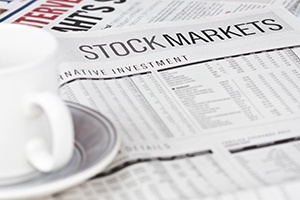 After the market's record-setting run, we’re now seeing a small pullback. This seems an appropriate time to take a look back at history and evaluate where we stand—not so much on the valuation and risk front, but with a general eye to how the market behaves over time and how we should react.
After the market's record-setting run, we’re now seeing a small pullback. This seems an appropriate time to take a look back at history and evaluate where we stand—not so much on the valuation and risk front, but with a general eye to how the market behaves over time and how we should react.
Beware the ides of March?
Tomorrow, March 9, is a milestone of sorts. On March 9, 2009, the S&P 500 closed at 676.53, the lowest point of the bear market after the financial crisis. Eight years ago tomorrow, the markets finally bottomed out and started rising, bringing us to today's record levels. The following day, March 10, marks a milestone of a very different nature. On March 10, 2000, the dot-com bubble burst and the decline began.
March seems to be a good month for trend changes, especially big trends. Do we need to watch out?
In truth, of course, there’s nothing special about March, just as there’s nothing really special about October. The stock market does what it does. At the same time, the conjunction of dates does remind us that peaks and bottoms are a real feature of the market.
Although today’s market seems more likely to keep going up than to reverse course, it also seems clear that we're much nearer the top than the bottom. Where will the top be? Wish I knew, but I suspect it will be higher than most people suspect—and when we do get there, everyone will fully expect the market to go even higher.
The lesson to take away from March 2009 and March 2000 is simple: don't get caught up in the emotions around a stock market trend. In March 2009, investors were convinced that the market was never coming back, even as it finally turned up. Conversely, in March 2000, expectations were for the market to go nowhere but up. Sentiment tends to be strongest when it is most wrong.
Invest on facts, not feelings
Recently, I’ve spoken with a number of investors who are disappointed in their returns and want to dial up the risk in search of bigger gains. With the market setting new records and likely to rise, they feel the risk is low enough to justify such a move. They’re probably right, in the short run. But the more people think like that, the higher the market is driven up—and the worse the eventual downturn may be.
My guidance on this is pretty much always the same: make decisions based on facts, not emotions. If you have a risk tolerance, defined by multiple years of investing, don’t change it because of the way you feel today. It’s very likely that the better you feel, the higher the risk, and vice versa. Right now, when markets are feeling pretty good, the risks are high and rising.
Remember March 2000 when you think about taking more risk. And remember March 2009 when you think about taking less. Remember your long-term goals when you consider making short-term adjustments. And as you remember these things, think twice about allowing emotion into what should be a rational process.


 Print
Print


